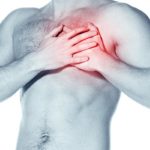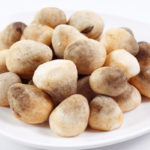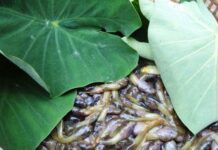Foods that increase the risk of stroke
Roasted peanuts
Roasted peanuts are a favorite food for many people because of their delicious taste, affordability, and simple preparation. However, you should not eat too much of this type of food because roasted peanuts contain a lot of fat and calories, which can lead to hardening of the arteries. This is especially true for people with pre-existing circulatory problems, as they are at an increased risk of developing stroke.
In addition, roasted peanuts are often added with a lot of salt to enhance the flavor. Consuming too much salt can cause the blood vessels and heart to work harder to pump blood, leading to high blood pressure and an increased risk of cardiovascular diseases.
Alcohol
There is a close relationship between alcohol consumption and blood clots. Drinking alcohol can damage the vascular endothelium due to the effects of blood pigment, platelets, and fibrin. The vascular endothelium will be damaged, leading to the formation of local blood clots and obstruction of blood flow.
Furthermore, alcohol intoxication can cause prolonged limb compression that the intoxicated person may not realize. It can also cause venous return disorders and blood clots. If you want to prevent blood clots, it is best to avoid alcohol as higher alcohol content makes it easier for blood clots to form.

Animal organs
Animal organs have a high fat content. Regular consumption of animal organs can increase cholesterol levels and contribute to the development of atherosclerosis, leading to recurrent stroke.
High-sodium foods
Individuals with high cholesterol should control their salt intake, including pickled vegetables, processed foods, and more. A high-sodium diet can increase blood pressure and the risk of atherosclerosis, blood vessel obstruction, and stroke.

Snacks
Snacks often contain high amounts of oil, sugar, butter, and more. Excessive consumption of snacks over a long period of time can lead to obesity and continuous accumulation of fat in the body. The first sign is high cholesterol, thicker blood, clotting, and an increased risk of cardiovascular diseases.
Symptoms of stroke
Sudden dizziness
This is the most common symptom before a stroke occurs. It often occurs when the patient is tired, after taking a shower, or upon waking up in the morning. If a person experiences dizziness more than 5 times a day, they should be vigilant of the possibility of stroke, cerebral hemorrhage, and cerebral infarction.
Frequent yawning
This can be a warning sign of a stroke due to reduced blood flow and decreased oxygen supply to the brain. Additionally, studies show that 80% of people with localized cerebral infarction will experience frequent yawning 5-10 days before the onset of the disease.

Severe headaches
If sudden, severe headaches occur during certain times such as when feeling sleepy, experiencing sudden changes in position, coughing, or sleeping at night, it is best to seek medical attention as soon as possible.
Language disorders
In the early stages of cerebral infarction, blood supply to the brain is affected, resulting in localized ischemia and decreased oxygen supply. This can have an impact on speech expression and manifest in clear language disorders, such as unclear speech.
Tingling tongue
Approximately 25% of patients will experience transient localized ischemia before a stroke or what is called a small stroke. Symptoms include language disorders before the onset of the disease, such as difficulty speaking. Therefore, if you frequently experience a tingling sensation in your tongue, be cautious.
Unveiling the Miraculous Benefits of Mushrooms
From the savory flavor they offer in dishes to their vast array of health benefits, mushrooms are a major force in the culinary world. Not only are they known as a delicious ingredient in countless recipes, but their impressive benefits can help to fight obesity, high blood pressure, and even cancer prevention.







































